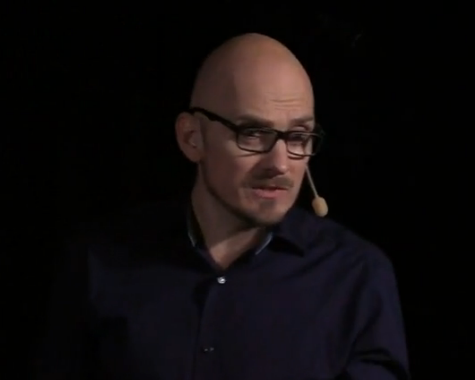But we've also done studies where we try to match what they say with the actual faces.
但是我們也做過研究,嘗試將實際的面容與和他們的描述相匹配。
And then we find things like this.
然后我們發現了這樣的事情。
So here, this male participant, he preferred the girl to the left, he ended up with the one to the right.
這個男性參與者,他偏好左面的女人,但結果他卻是選的右邊的那位。
And then, he explained his choice like this.
然后,他給出的解釋是:
"She is radiant. I would rather have approached her at the bar than the other one. And I like earrings."
“她明艷動人,我寧可在酒吧碰到是她而不是另外一位。并且我喜歡這耳環。”
And whatever made him choose the girl on the left to begin with, it can't have been the earrings,
但開始不管是什么理由讓他選擇了左邊的女人,耳環肯定不是其中一個,
because they were actually sitting on the girl on the right.
因為,右邊的女人才戴耳環。

So this is a clear example of a post hoc construction.
這明顯是一個“事后構建”的例子。
So they just explained the choice afterwards.
因此,他們只是后來才對作出的選擇進行解釋。
So what this experiment shows is, OK, so if we fail to detect that our choices have been changed,
那么這個實驗表明,如果我們沒有發現自己的選擇被調換了,
we will immediately start to explain them in another way.
我們會立即開始用另外一種方式來解釋。
And what we also found is that the participants often come to prefer the alternative,
我們還發現參與者會漸漸喜歡上另外那個,
that they were led to believe they liked.
他們被引導,從而相信那就是他們喜歡的。
So if we let them do the choice again, they will now choose the face they had previously rejected.
如果我們再讓他們做出一次選擇,他們就會選擇曾經被他們拒絕掉的那個。
So this is the effect we call "choice blindness."
這就是我們所說的“選擇盲目性”效應。
And we've done a number of different studies
并且我們做了很多不同的研究,
we've tried consumer choices, choices based on taste and smell and even reasoning problems.
我們在消費者選擇上做過實驗,建立在味覺和嗅覺上的實驗,甚至還有推理問題。
But what you all want to know is of course does this extend also to more complex, more meaningful choices?
但你們都想知道的是,這個現象能否適用于更復雜,更有意義的選擇上呢?
Like those concerning moral and political issues.
比如那些關注于道德和政治的問題。











